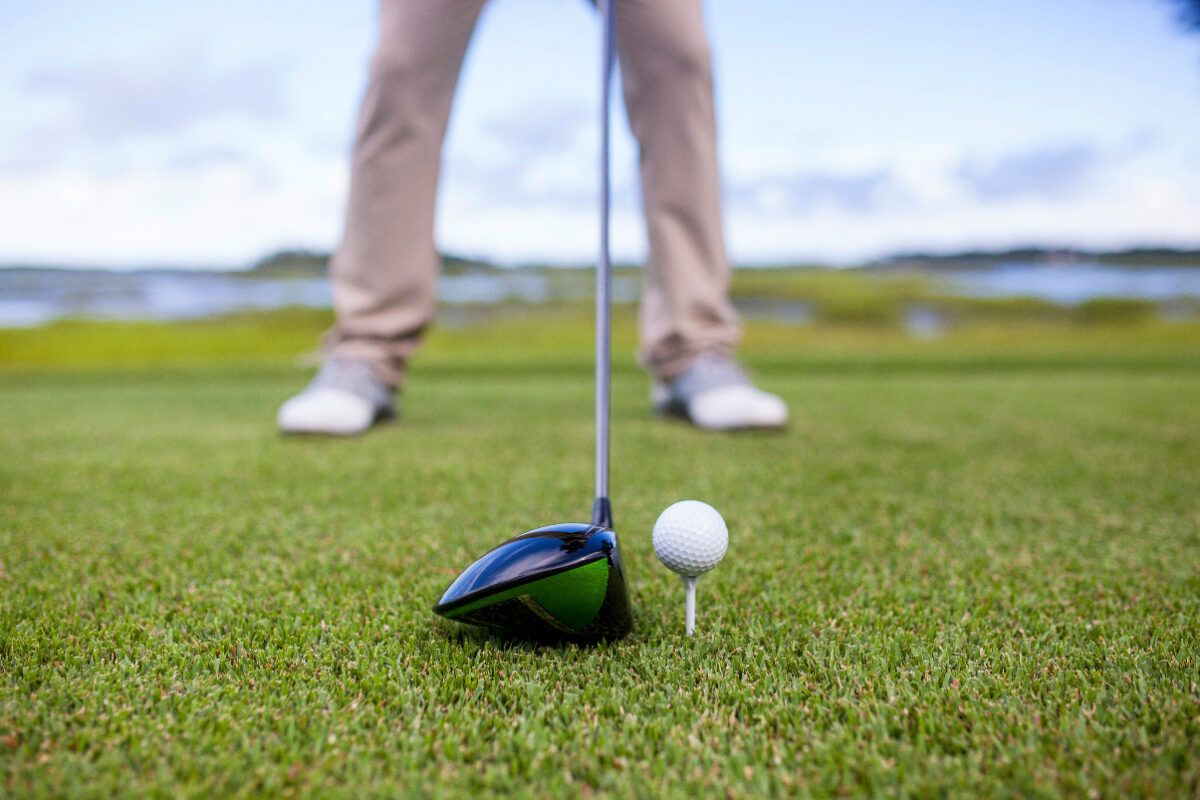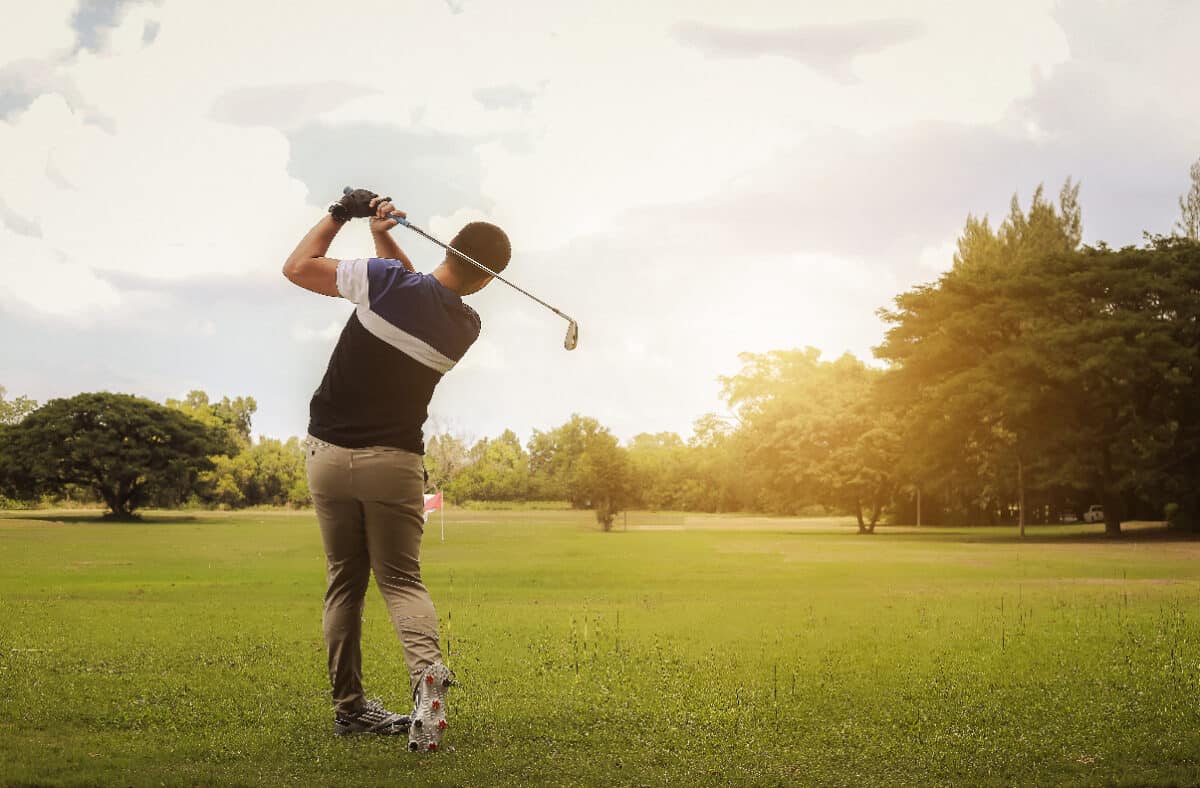How to Get the Golf Ball in the Air with Your Driver?
Learning to launch golf balls high with the driver is key for maximizing distance off the tee.
An ideal high launch with a low spin trajectory extends carry distance before the ball rolls out.
Here is a guide on driver setup, swing adjustments, and impact factors that help get your tee shots airborne.

Optimize Your Stance and Posture
Proper stance, posture, and body alignments promote efficient impact conditions to lift the ball into the air:
- Stand slightly behind the ball initially before stepping into your shot line.
- Position the ball forward in your stance, in line with lead foot instep.
- Keep feet shoulder-width apart for balance, knees softly flexed.
- Maintain spine angle tilt from the waist at address, do not hunch.
- Keep your head steady behind the ball without dipping or swaying.
- Ensure the body is aimed squarely towards the target, and avoid being open.
Solid fundamentals in stance and posture create an athletic ball-striking foundation.
Grip Pressure and Placement
Check your grip to ensure proper hand placement and pressure:
- Use a neutral, overlapping, or interlocking grip depending on preference.
- Ensure the grip is aligned in fingers, not seated fully in palms.
- Grip pressure should be light but secure, avoid tension and squeezing.
- Keep the lead wrist flat and avoid cupping, or bowing the lead wrist at address.
Proper grip delivery optimizes delivery through impact for cleaner strikes.

Backswing Adjustments
Elements of the backswing that promote efficient impact for launch include:
- Keep the backswing compact without overswinging past flexibility.
- Allow arms and shoulders to turn together up and around the body.
- Maintain a triangle of arms and shoulders with elbows pointing down.
- Hinge wrists naturally to 90 degrees, no earlier or later wrist break.
- Weight should shift slightly towards the back foot without swaying the head.
Compact, synchronized backswings align the body for an ideal downswing sequence.
Transition and Start Downswing
A smooth transition starts the proper delivery into impact:
- Transition weight into lead side by dropping lead shoulder while shifting hips.
- Pull lead elbow down towards hip using core and shoulder turn.
- Allow the club to shallow onto the downswing plane and avoid casting.
- Time the hip and torso turn to pull hands and arms down.
Rhythm is key – avoid rapid firing or overly slowing the transition.
Impact Positioning
Proper alignments at impact lift the ball:
- Hands slightly ahead of the clubhead with the shaft leaning forward.
- Shoulders, hips, and feet open towards the target.
- The head stays centered behind the ball through impact.
- Approx. 75% of the weight fully shifted to the front foot.
- Ball contacted first, then sweep the ground.
Strike the ball before the turf with leading hands through impact.

Follow Through and Finish
The finish position mirrors the impact alignment:
- Allow full release of hands and club post-impact.
- Extend arms out towards the target after the ball is long gone.
- Pronated forearms indicate proper release through the ball.
- Finish balanced with the majority of the weight on the lead leg.
Hold the finish position a moment to avoid slowing prematurely.
Adjusting Ball Position
Ball position influences dynamic loft at impact:
- Move the ball slightly back to increase loft and launch.
- Ball further forward reduces loft for a flatter trajectory.
Changing ball position increments can fine-tune launch angles.
Maintaining Lag in Downswing
Retaining the wrist hinge lag on the downswing holds loft through impact.
Let wrists naturally release only after contacting the ball, not early from casting.
Lag adds loft (and distance!) right when you need it.

Additional Considerations For Launch
Some other pointers for optimizing the launch:
- Teed height influences launch, adjust up or down to fine-tune height. Lower tee = lower flight.
- Central hits launch higher than toe/heel strikes. Contact quality matters.
- Launch monitors and video provide launch angle feedback for dialing in.
- Driver loft adjustment can optimize launch angles. Consider adjustability.
- Premium balls enhance launch versus rock-hard range balls. Play quality balls.
- Swing easier and smoother to find the center sweet spot for an ideal launch.
Good fundamentals, optimized equipment, and centered contact are key for launching tee shots high and deep down the fairway. Be patient and eliminate the big misses first. Consistency develops with practice.
Importance of Swing Plane and Path
Besides technique, the clubhead’s approach path greatly controls launch:
- A slightly upward angle of attack adds loft at impact for higher flight.
- Downward angles reduce loft and launch. Too steep drops trajectory.
- An Inside-out swing path helps close the clubface for higher draws/fades.
Work on shallowing for correct angles and maximizing launch with your driver.
Summary of Driver Launch Essentials
In review, these steps help maximize driver shot height and distance:
- Optimized stance, posture, and body angles.
- Proper grip and light pressure.
- Compact backswing with a full shoulder turn.
- Smooth transition initiating downswing.
- Forward hands at impact with weight-shifted lead.
- Release and extend through the ball after contact.
- Adjust ball position to fine-tune launch angles.
- Maintain lag and maximize wrist hinge.
- A shallow swing plane through impact adds loft.
- Centered hits and quality equipment.
The combination of sound swing technique, dialed-in adjustments, and equipment that fits your swing will help drive the ball into the air for maximum carry off the tee.
Be patient in eliminating slices and tops first before expecting to hit majestic high-launching drives. Improvement takes time through practice.